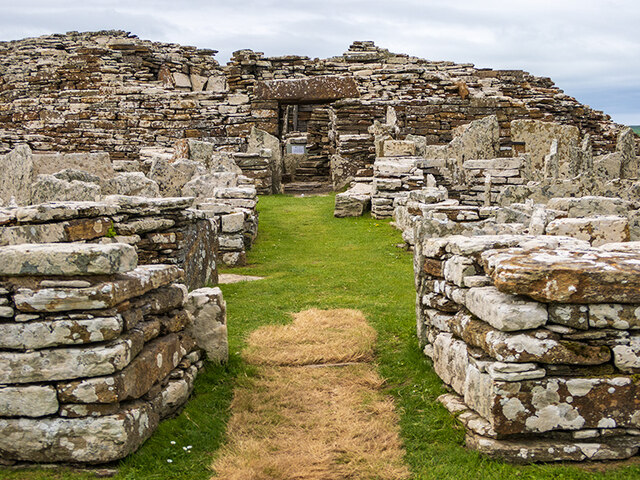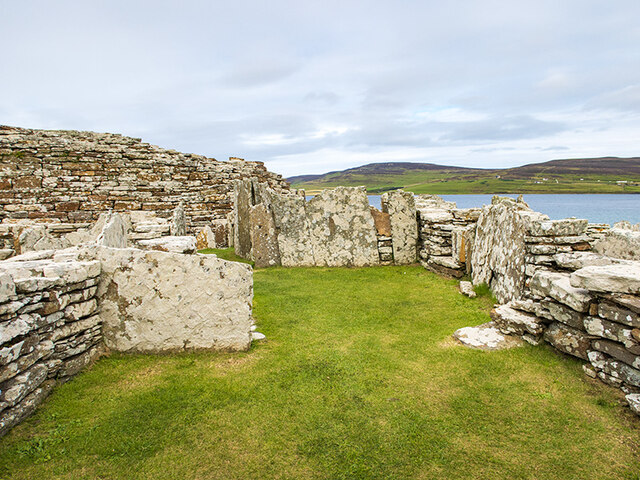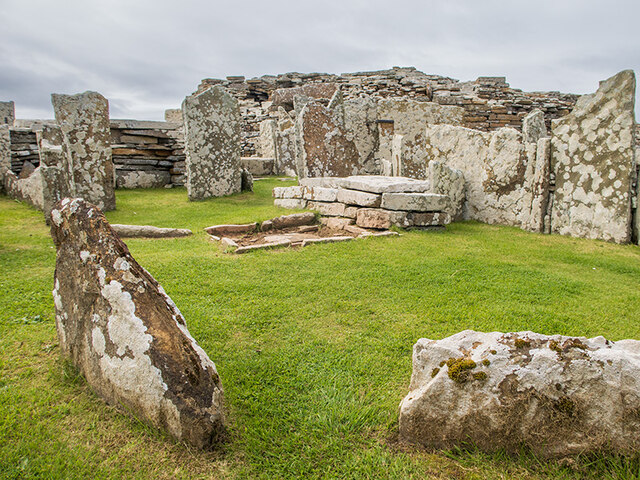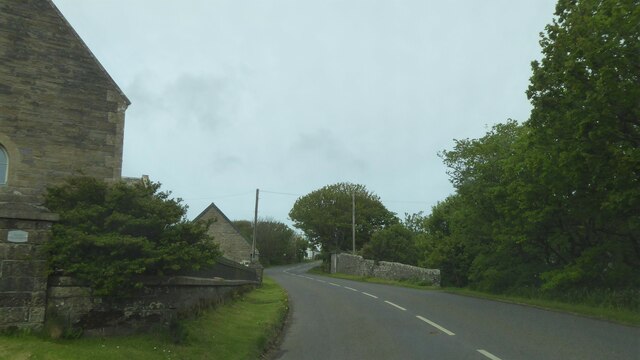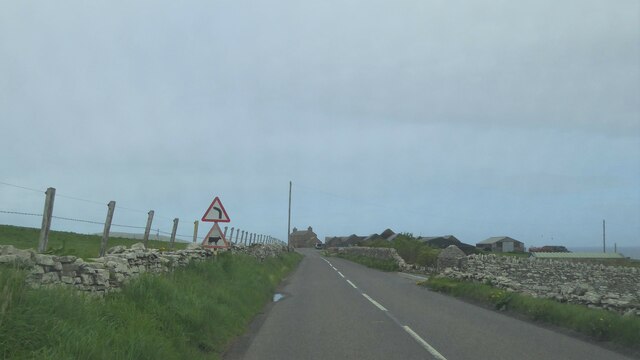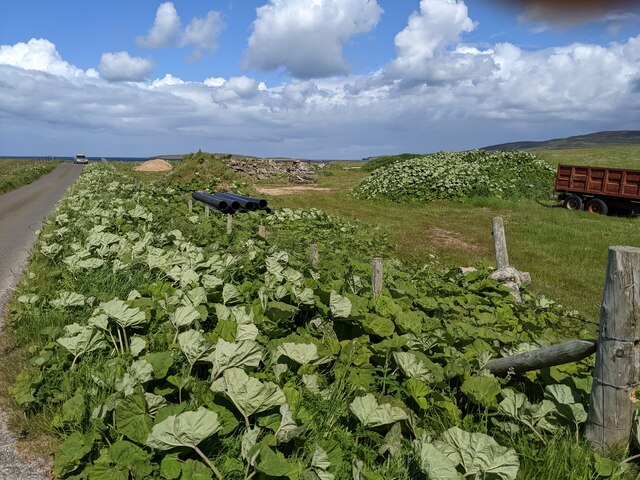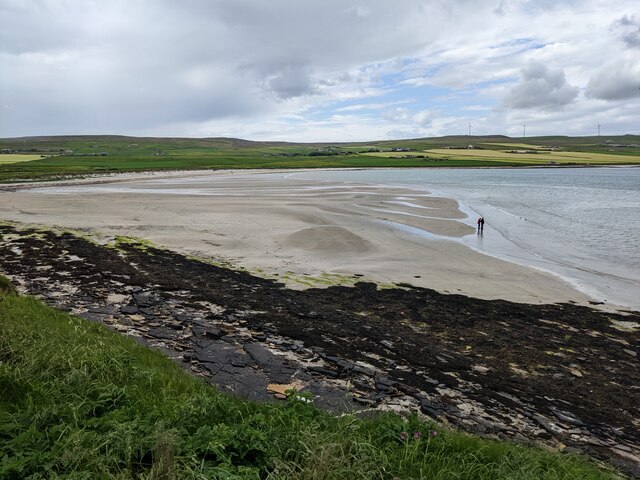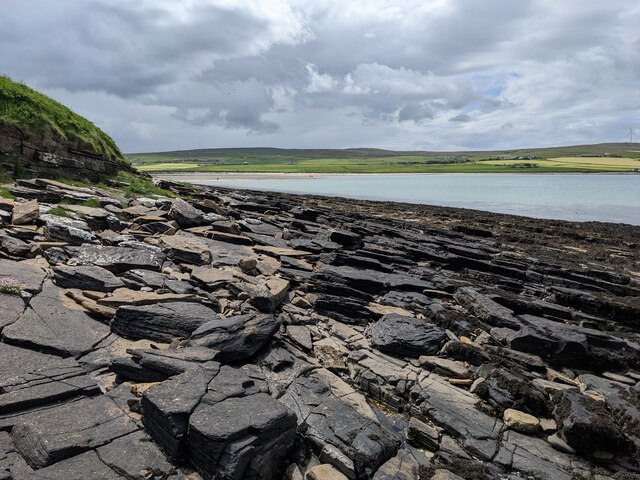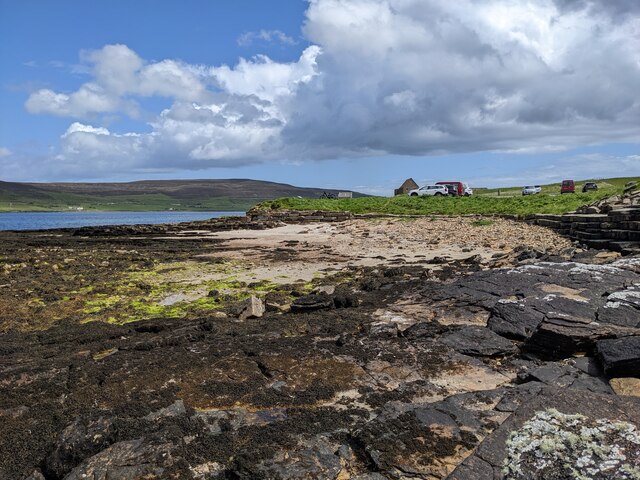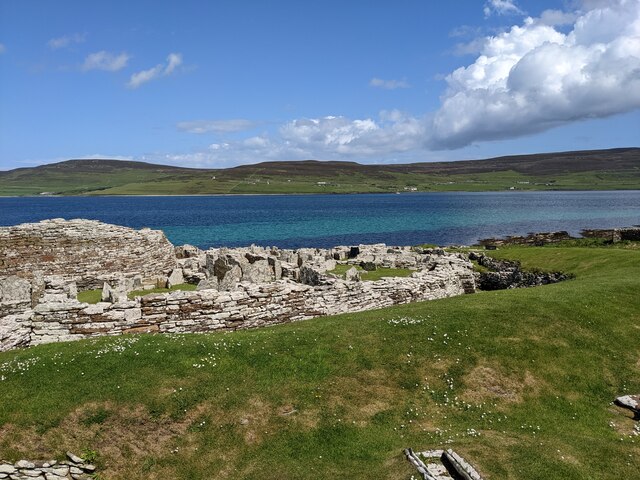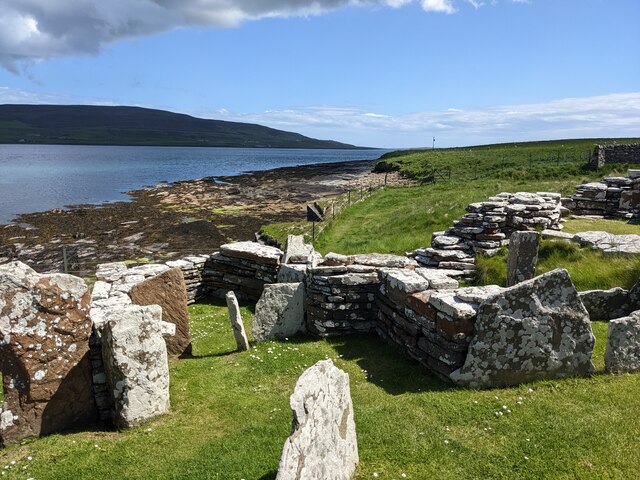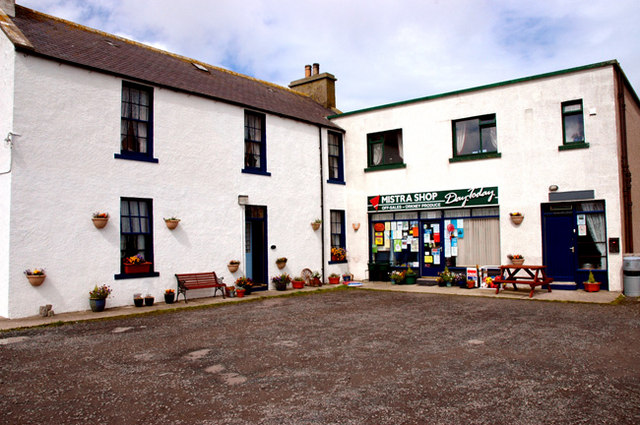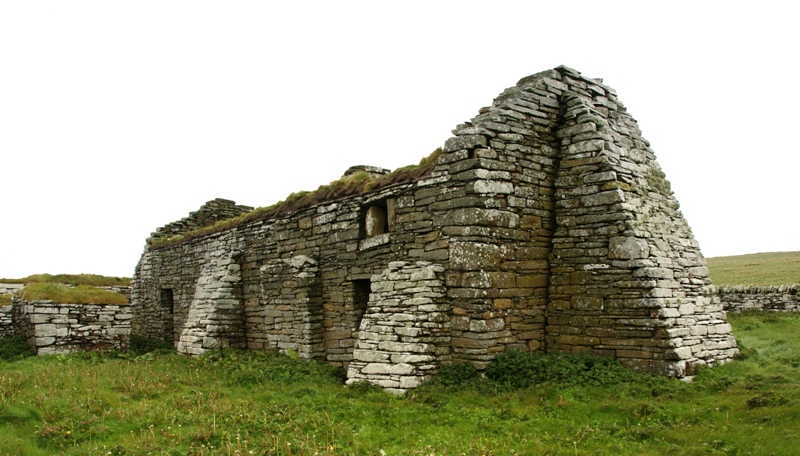Stooun
Coastal Feature, Headland, Point in Orkney
Scotland
Stooun
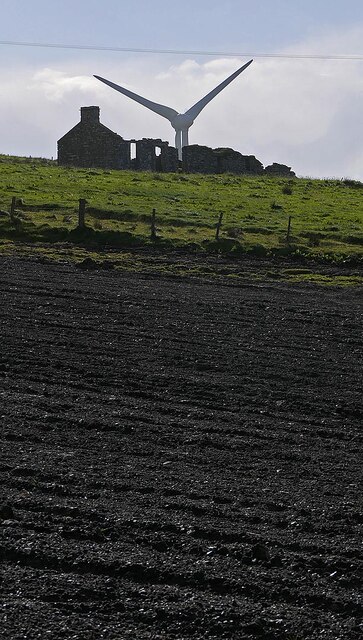
Stooun is a prominent coastal feature located on the Orkney Islands, situated off the northeastern coast of Scotland. It is specifically found on the mainland of Orkney, near the town of Stromness. Stooun is a headland or point that juts out into the North Atlantic Ocean, offering stunning views of the surrounding seascape.
The area surrounding Stooun is characterized by rugged cliffs, formed from layers of sedimentary rock that have been eroded over time by the relentless waves. These cliffs provide a natural barrier, protecting the nearby coastline from the powerful forces of the ocean. The rocks at Stooun are predominantly composed of sandstone and shale, displaying fascinating geological formations and patterns.
From Stooun, visitors can witness the forces of nature at work, as the crashing waves constantly shape and reshape the coastline. The headland also serves as a habitat for various seabird species, including gulls, puffins, and fulmars, which can be seen soaring above the cliffs or perched on the rocky ledges.
Access to Stooun is relatively easy, with a footpath leading from the nearby town of Stromness. The path provides an enjoyable hike along the coastline, offering opportunities for nature enthusiasts and photographers to capture the stunning scenery.
Stooun is a must-visit destination for those seeking a unique coastal experience in Orkney. Its rugged beauty, geological significance, and abundant wildlife make it an appealing location for both locals and tourists alike.
If you have any feedback on the listing, please let us know in the comments section below.
Stooun Images
Images are sourced within 2km of 59.123699/-3.1137668 or Grid Reference HY3626. Thanks to Geograph Open Source API. All images are credited.
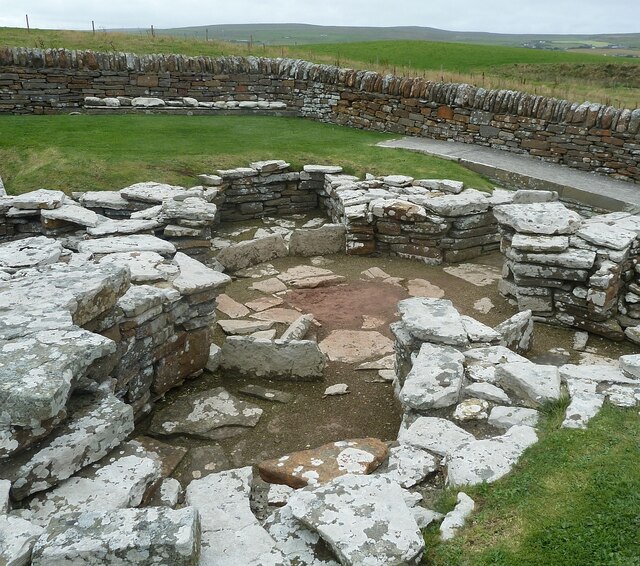
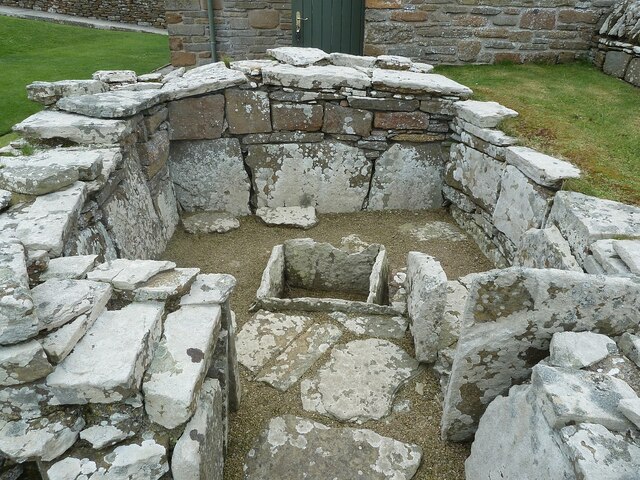
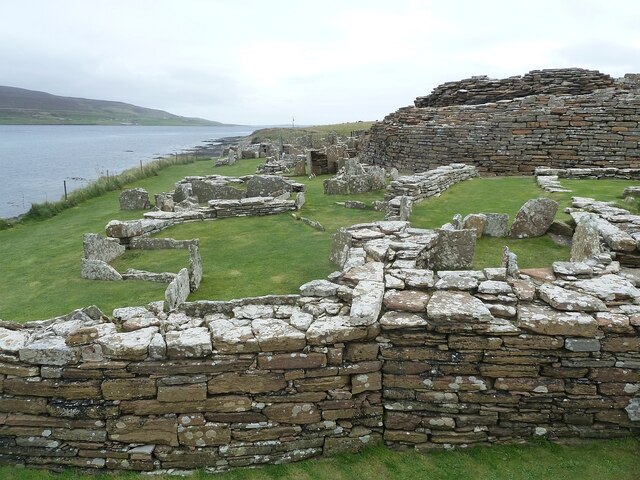
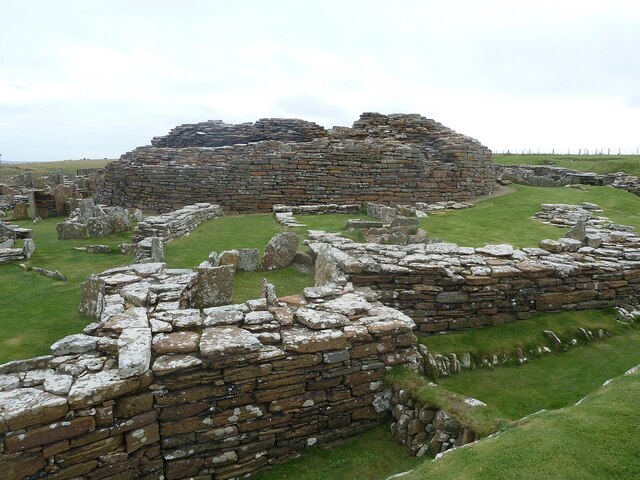
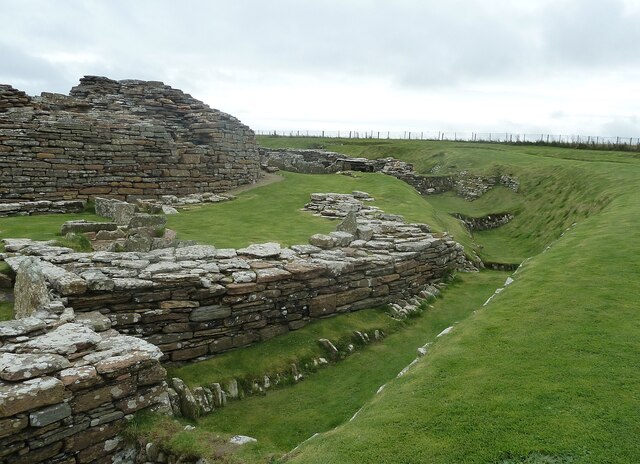
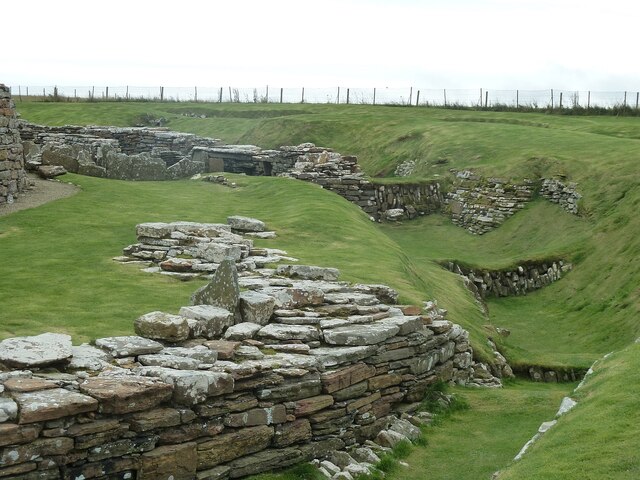
Stooun is located at Grid Ref: HY3626 (Lat: 59.123699, Lng: -3.1137668)
Unitary Authority: Orkney Islands
Police Authority: Highlands and Islands
What 3 Words
///equipment.polite.attending. Near Evie, Orkney Islands
Nearby Locations
Related Wikis
Aikerness Bay
Aikerness Bay is an embayment of Eynhallow Sound on the northwest coast of Mainland Orkney, Scotland. The headlands of Point of Hellia at the east and...
Evie, Orkney
Evie (pronounced ) is a parish and village on Mainland, Orkney, Scotland. The parish is located in the north-west of the Mainland, between Birsay and Rendall...
Sands of Evie
The Sands of Evie is a sandy beach landform near the village of Evie on Mainland Orkney, Scotland, protected by the Point of Hellia headland. This beach...
Point of Hellia
The Point of Hellia is a headland on the northwest coast of the Orkney Mainland, Scotland. This landform extends into the southern part of Eynhallow Sound...
Eynhallow Church
Eynhallow Church is a ruined medieval church located on the uninhabited island of Eynhallow in Orkney, Scotland. The church dates back to the 12th-century...
Broch of Gurness
The Broch of Gurness is an Iron Age broch village on the northeast coast of Mainland Orkney in Scotland overlooking Eynhallow Sound, about 15 miles north...
Eynhallow Sound
Eynhallow Sound is a seaway lying between Mainland Orkney and the island of Rousay in the Orkney Islands, Scotland. The tidal indraught is "scarcely felt...
Eynhallow
Eynhallow (Scots: Eynhallow; Old Norse: Eyinhelga; Norn: Øjinhellig) is a small, presently uninhabited island, part of Orkney, off the north coast of mainland...
Have you been to Stooun?
Leave your review of Stooun below (or comments, questions and feedback).
